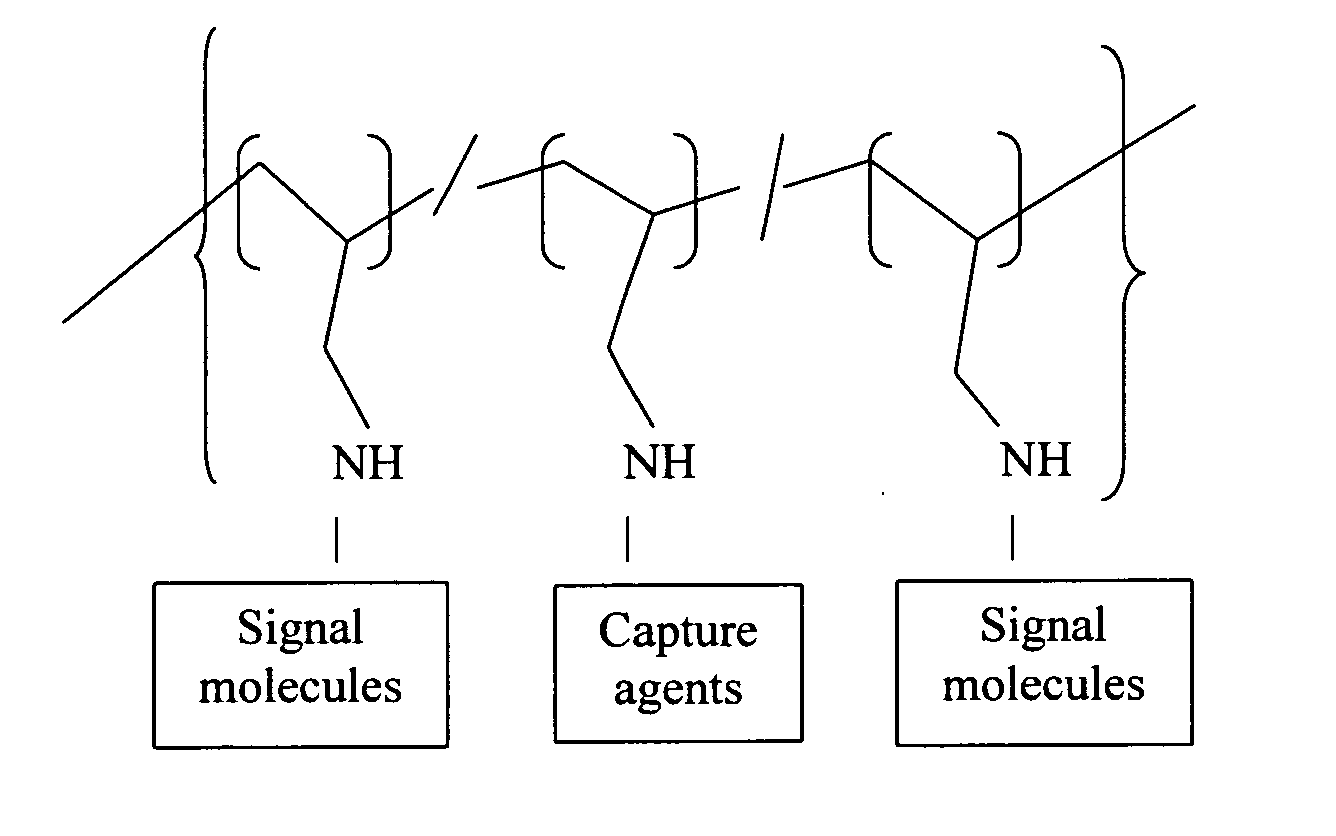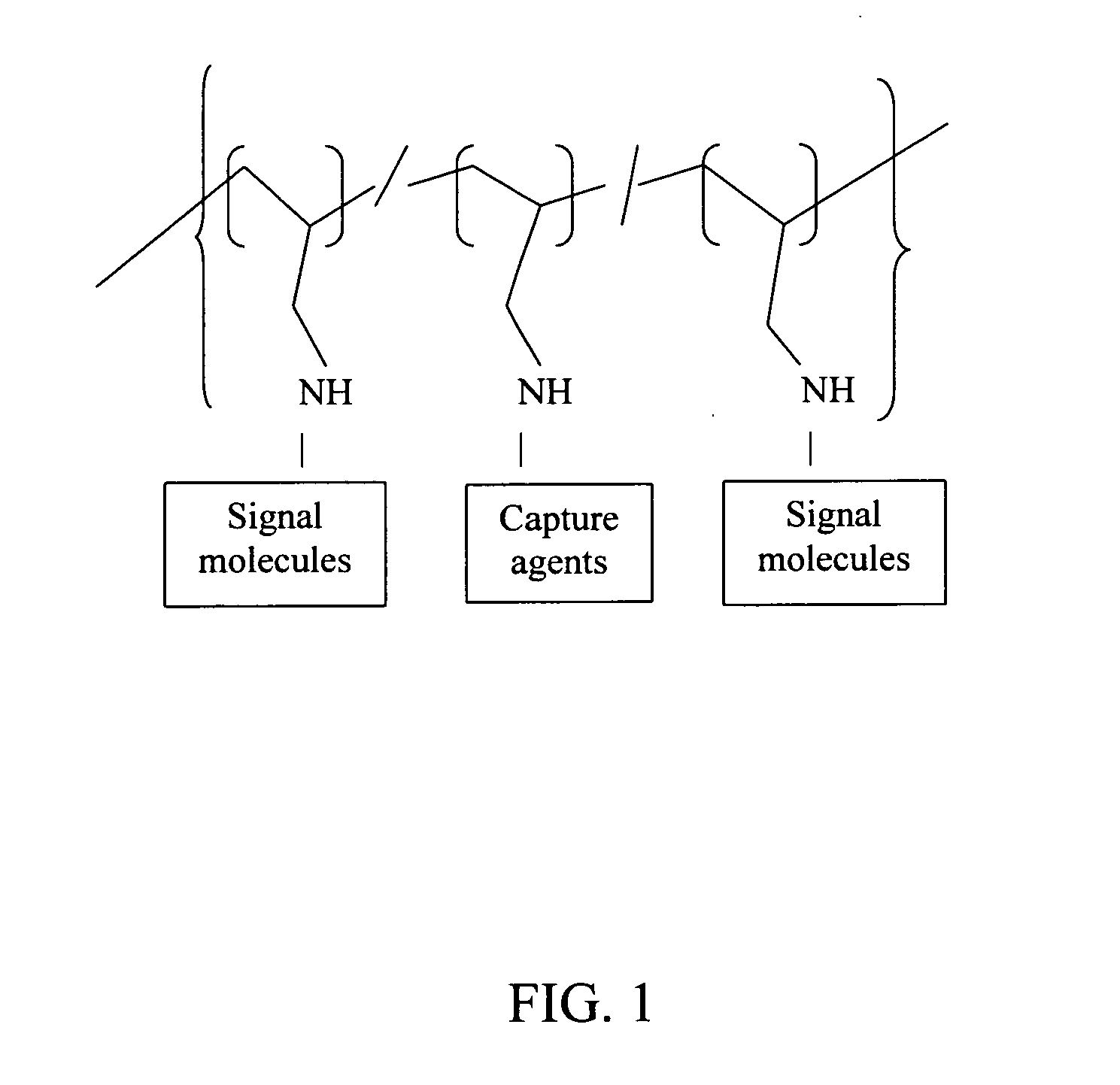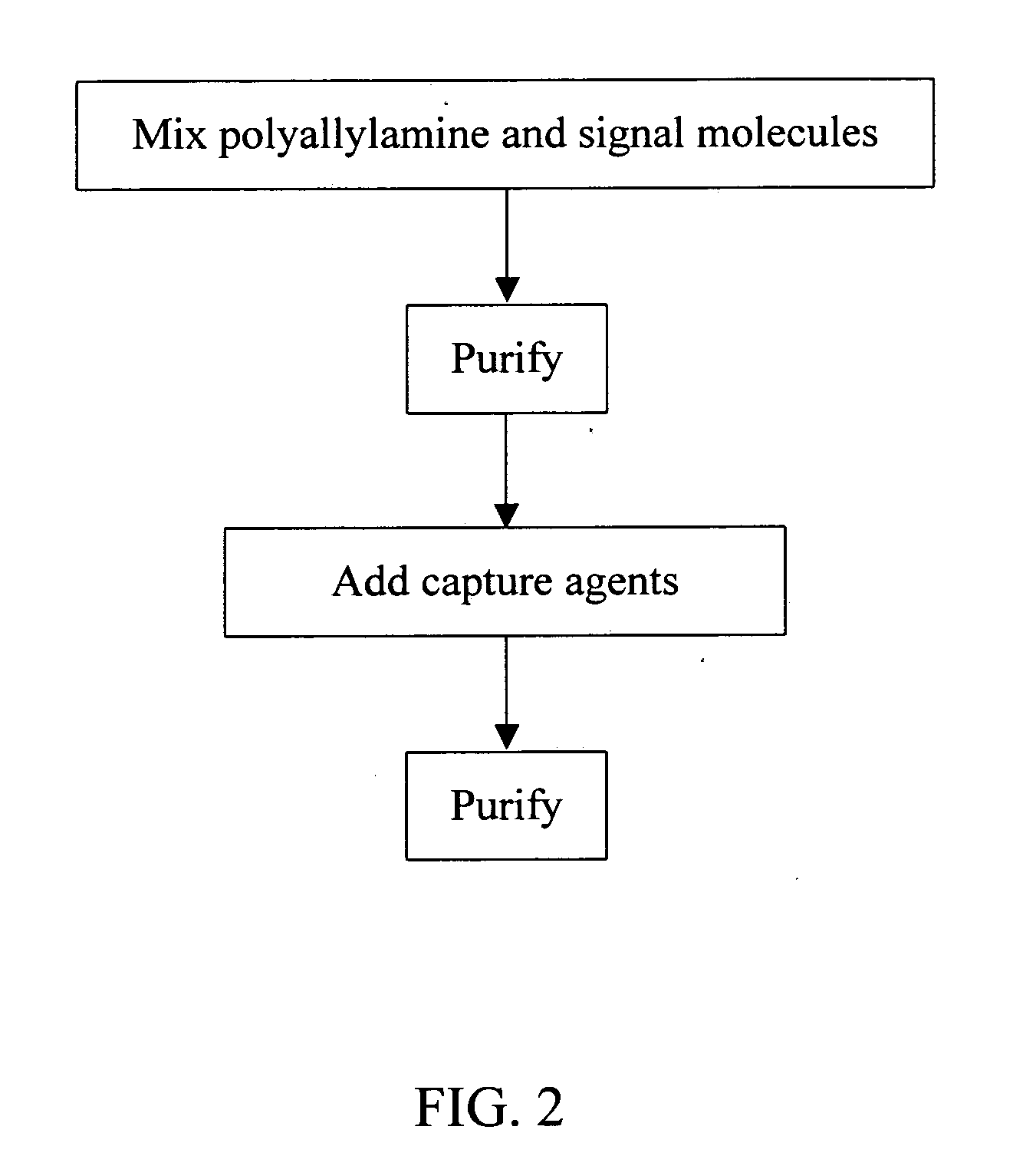Polyallylamine conjugates and applications thereof for biological signal amplification
a technology of polylysine and conjugates, applied in the field of polyallylamine conjugates and applications thereof for biological signal amplification, can solve the problems of complicated and difficult control of the signal amplification procedure using dextran or polylysine, and achieve the effect of shortening the time for preparation
- Summary
- Abstract
- Description
- Claims
- Application Information
AI Technical Summary
Benefits of technology
Problems solved by technology
Method used
Image
Examples
example 1
[0028] This example provides a method for preparing polyallylamine conjugate as described below, in which fluorescence reagent cy5 was chosen as signal molecules, modified anti-IgE-(SH)n was the capture agent, and added cross-linking agent SPDP to assist the binding of capture agent with the polyallylamine so as to obtain a polyallylamine conjugate.
(A) Preparation of (SPDP)n-PAA-(cy5)n
[0029] Prepare 10 mg / ml polyallylamine (PAA, MW=65 k, Aldrich Chemical) solution with 0.1M phosphate buffered saline (PBS; pH 7.4; see Sambrook, et al., Molecular Cloning, A Laboratory Manual, Cold Spring Harbor Laboratory Press, New York, 2001 for its preparation) and add ½ tube cy5-NHS (Amersham Biosciences). After reaction for 90 minutes under ambient temperature, separate unreacted cy5-NHS with PD-10 column and measure the absorption spectrum of collected fractions using spectrophotometer (200˜650 nm). Choose fractions that show absorbance at 208 nm and 650 nm simultaneously. Add SPDP (Pierce Co...
example 2
[0032] Prepare 10 mg / ml polyallylamine (PAA) solution with 0.1M PBS buffer (pH 7.4). Add ½ tube cy5-NHS to 50 μl PAA solution. After reaction for 90 minutes under ambient temperature, remove unreacted cy5-NHS with PD-10 column and measure the absorption spectrum of collected fractions using spectrophotometer (200˜650 nm). Choose fractions that show absorbance at 208 nm and 650 nm simultaneously to obtain purified PAA-cy5 compound. Serially dilute the synthesized PAA-cy5 (0.2 mg / ml) described above and dextran-cy5 having the same concentration by a factor of 10 each time (1, {fraction (1 / 10)}, {fraction (1 / 100)}, {fraction (1 / 1000)}, and {fraction (1 / 10000)}), and compare the fluorescence intensity of the solutions using microarray scanner GenePix4000B. The results are shown in FIG. 4A and FIG. 4B.
[0033]FIG. 4A shows the respective images of signal molecules of PAA-cy5 and dextran-cy5 at different concentrations. FIG. 4B compares the line graphs of fluorescence intensity versus dilu...
example 3
[0034] This example describes the application of polyallylamine conjugate synthesized according to Example 1 on biochip to amplify biological signals. First immobize staphylococcal protein A onto a chip (37° C., 1 hour), wash off protein A not attached to the chip, and add 10-fold dilution of polyallylamine conjugate (anti-IgE-PAA-cy5) synthesized according to Example 1. After reaction for 1 hour under 37° C., wash off unreacted polyallylamine conjugate, and scan the chip with GenePix4000B. The results are shown in FIG. 5A and FIG. 5B.
[0035]FIG. 5A is an image of the binding specificity of staphylococcal protein A to antibody, showing that staphylococcal protein A bind with antibody specifically. When 0.1M PBS (pH 7.4) was used as control, staphylococcal protein A did not show non-specific binding, which tends to lead to false positive (signal) reaction. FIG. 5B shows the image of chip after polyallylamine conjugate was added for amplification of biological signal. The upper row sh...
PUM
| Property | Measurement | Unit |
|---|---|---|
| Biological properties | aaaaa | aaaaa |
| Fluorescence | aaaaa | aaaaa |
Abstract
Description
Claims
Application Information
 Login to View More
Login to View More - R&D
- Intellectual Property
- Life Sciences
- Materials
- Tech Scout
- Unparalleled Data Quality
- Higher Quality Content
- 60% Fewer Hallucinations
Browse by: Latest US Patents, China's latest patents, Technical Efficacy Thesaurus, Application Domain, Technology Topic, Popular Technical Reports.
© 2025 PatSnap. All rights reserved.Legal|Privacy policy|Modern Slavery Act Transparency Statement|Sitemap|About US| Contact US: help@patsnap.com



